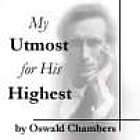 Art by its nature must be ethical. When an artist embraces the ethical element of creative expression, the borders of his license are clearly defined, and thus he is set free. A river gets where it is going because it has banks: that is why rivers are so much more romantic than puddles. Puddles have no banks - only a soggy shore where the sprawl of muddy water stops. Puddles lack the purposeful concentration of rivers, which focus their energy and resources in a particular direction. This is what ethical borders - and rules - are for.
Art by its nature must be ethical. When an artist embraces the ethical element of creative expression, the borders of his license are clearly defined, and thus he is set free. A river gets where it is going because it has banks: that is why rivers are so much more romantic than puddles. Puddles have no banks - only a soggy shore where the sprawl of muddy water stops. Puddles lack the purposeful concentration of rivers, which focus their energy and resources in a particular direction. This is what ethical borders - and rules - are for.Immediately, however, we are presented with a difficulty. There seems to be a widespread misunderstanding regarding not the application of rules, but rather the nature of rules. Commonly, rules are defined to be objective guidelines that bear little or no interpretation. They are presented in bulleted lists. Keeping them is approved. Breaking them is punished. End of discussion.
But what if rules are not objective at all, but rather inward and subjective? Further, what if particular rules are undiscoverable until the artist finds himself in need of one, and only then - intuitively - does he know how the thing must be?
There are rules behind the rules, and a unity which is deeper than uniformity. A supreme workman will never break by one note or one syllable or one stroke of the brush the living and inward law of the work he is producing. But he will break without scruple any number of those superficial regularities and orthodoxies which little, unimaginative critics mistake for its laws. The extent to which one can distinguish a just 'license' from a mere botch or failure of unity depends on the extent to which one has grasped the real and inward significance of the work as a whole.-C. S. Lewis, Miracles, (HarperCollins, 2001), 153
Great art is made by those who have cultivated this sense of the "living and inward law of the work" and who have properly related this sense to the "rules" developed by "experts." That is why good musicians trust their ear, good chefs their palate, and good craftsman their tactile intuition. That is also why great artists always surprise everyone, eliciting the adoration of the public and the wrath of the critics.
This, then, is the reason that art must be ethical. Without an active sense of what is appropriate, meaningful, and honest, there is no art - only noise and confusion. Breaking the rules just for the sake of breaking the rules will get you exactly nowhere. In order to break the rules properly, one must recognize a higher law - that immutable substrate on which hang all our imperfect and convoluted interpretations, like cheap dollar store ornaments on a stately Douglas Fir Christmas tree.
In challenging the supremacy of "rules," I have no desire to diminish the value of conventions, such as proper punctuation. Without conventions there can be no communication, and without communication there can be no art. For instance, a small dot at the end of a string of words emphatically marks the end of a thought. Don't believe me? Then. try. reading. a. sentence. like. this. one. Such a sentence is near impossible to read, because the convention has been violated.
(The violation of convention may at times serve a specific artistic purpose, or it may serve an instructional purpose, as my sentence above just did. The point is that it is important to distinguish between the breaking of rules and the violation of conventions if we are to achieve true artistry without sacrificing comprehensibility.)
Perhaps prohibitions against photographers intruding into their shot would be nothing more than dusty rules that only get in the way. Suffice to say that the artist must satisfy his own conscience regarding means and ends. The shortest road is not always the best.
Image courtesy of ksphotography.com












1 comment:
Nothing profound in my comment here -- just that a few related thoughts were going through my mind yesterday as I noticed the beautiful leaves on a tree in Father of the Bride (now why were we watching that? :-) and I remembered friends describing the filming of a major movie across the street from their Orange Co. home -- the film crew was wiring leaves onto the tree's branches to make it look more lush.
And earlier in the day we'd been talking to the wedding photographer who was describing various poses she'd set up - the toast, the cake cutting, etc -- all entirely separate from an actual toast or cake cutting moment...
So what of these "not quite the way things really were" photos? I guess when we add "glow" or "warmify" with the picasa program, or when we clone bushes to blot out some garbage can in the background of our photo, we've altered reality a bit, too.
Hmm, that's it... just a few very small ponderings of my own...
Lori McC
Post a Comment